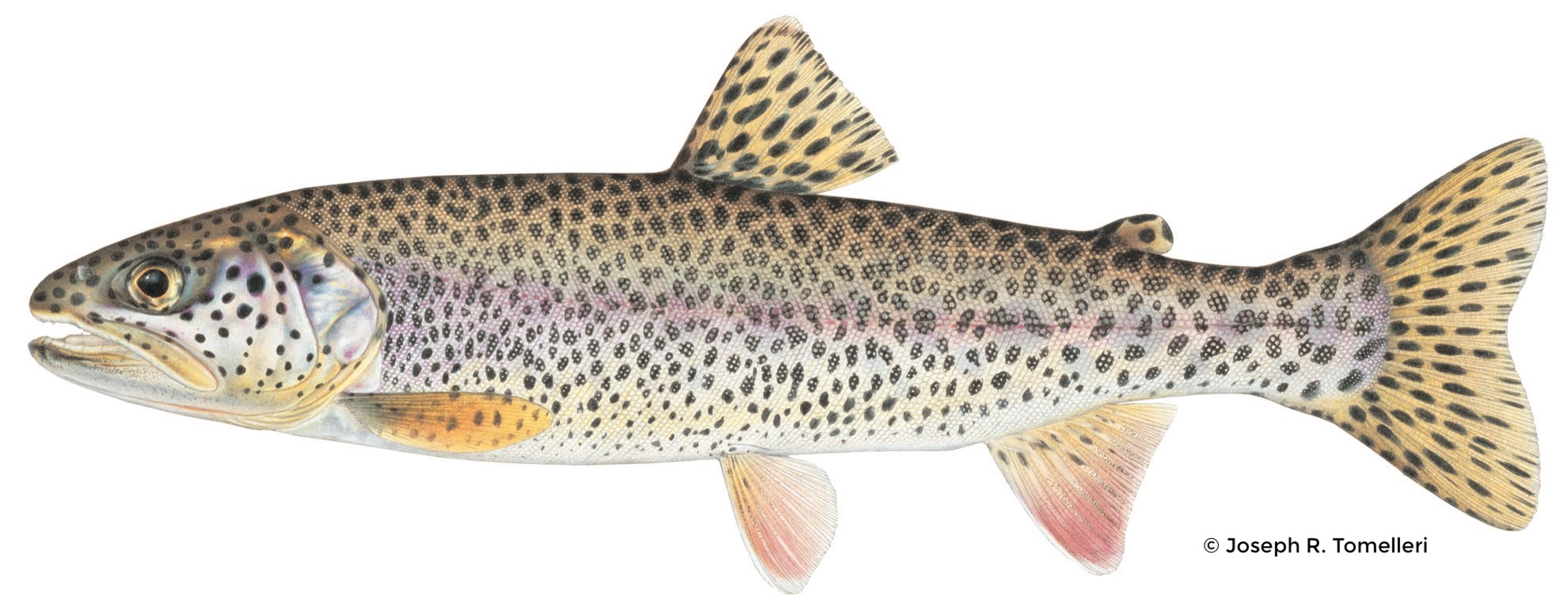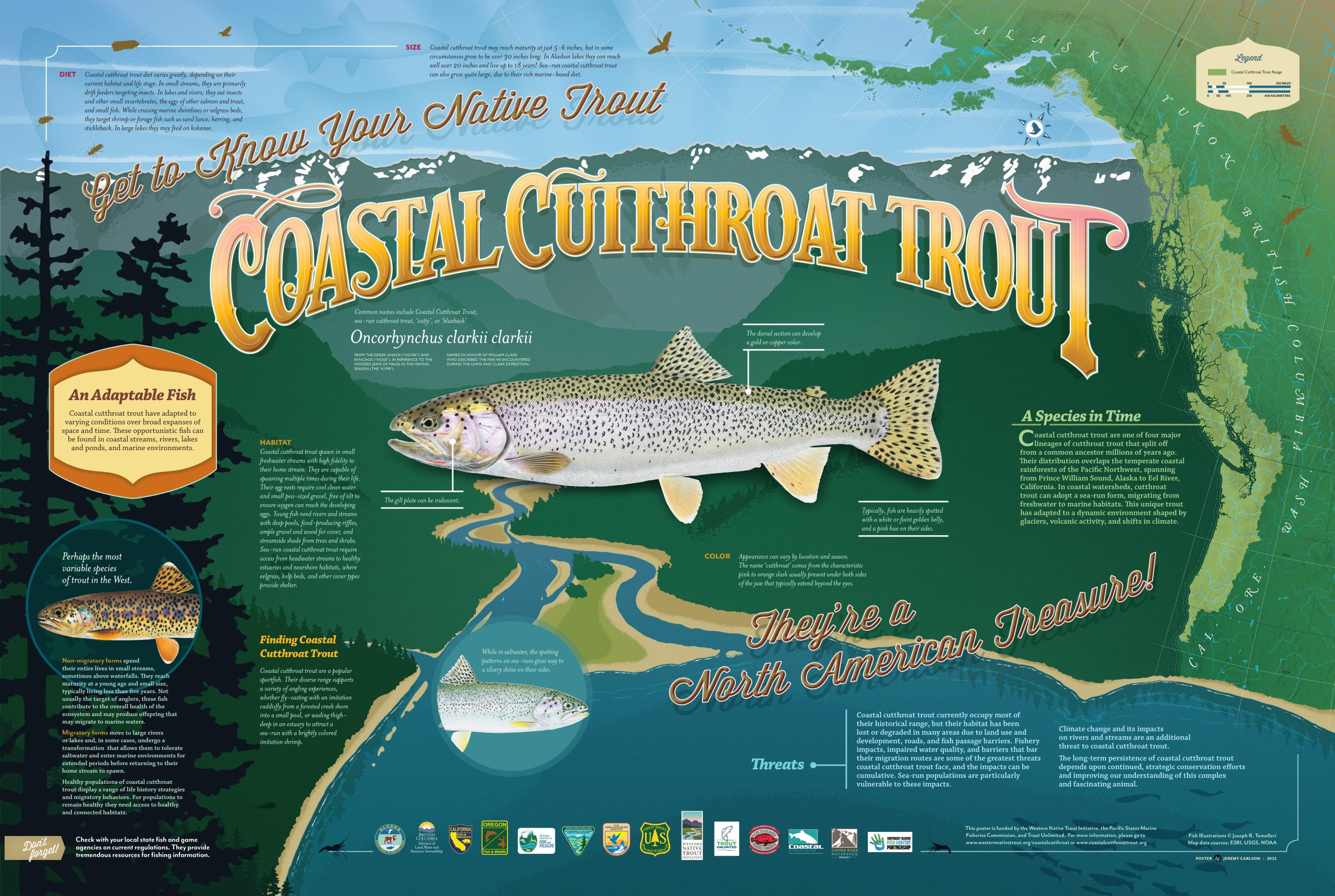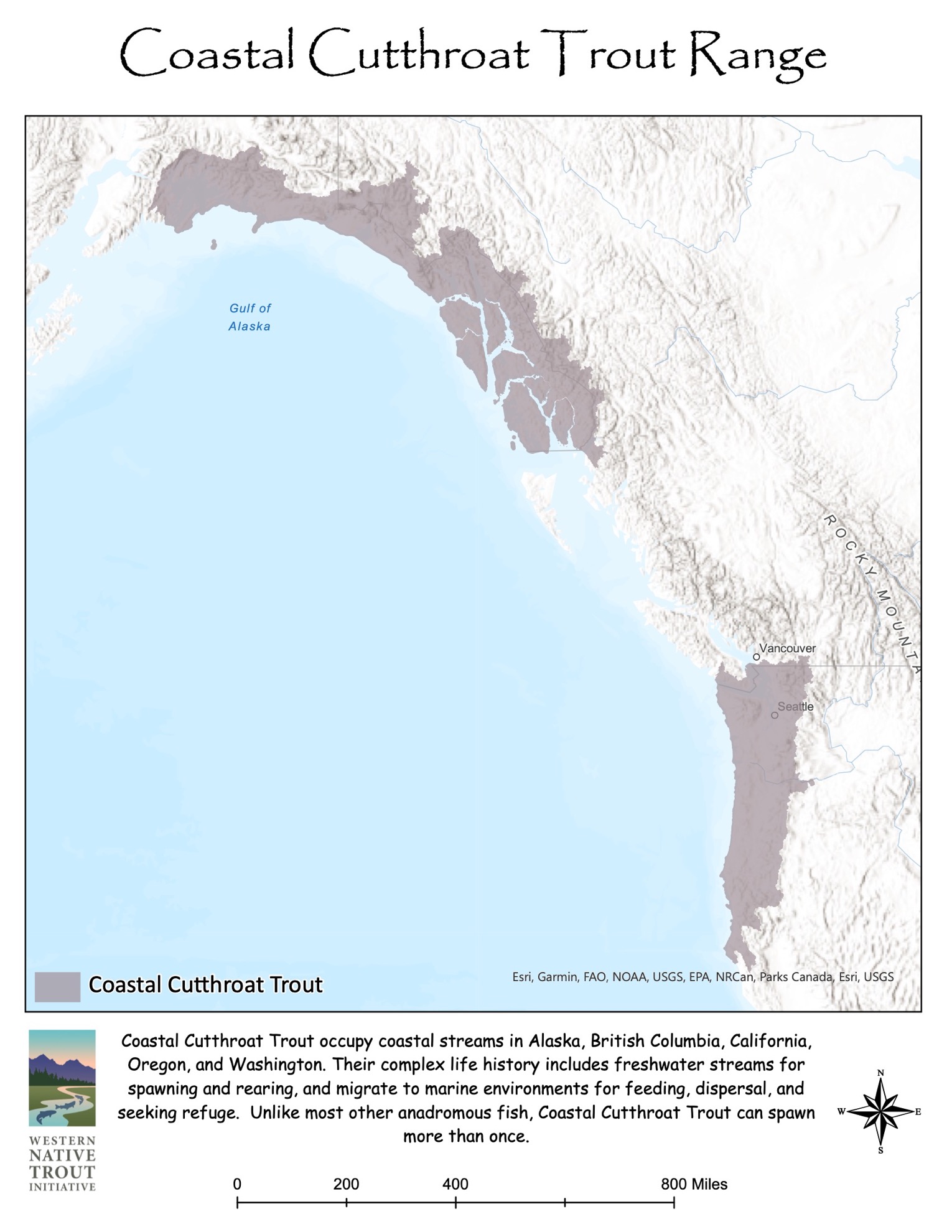
Coastal Cutthroat Trout (Oncorhynchus clarkii clarkii) are one of the four major subspecies of Cutthroat Trout (CT) in North America (Behnke 1992, Williams et al. 2018) and occupy coastal streams in California, Oregon, Washington, British Columbia, and Alaska. They have a complex life history in which they depend on freshwater streams and rivers for spawning and rearing. Yet they are the only cutthroat that migrate to marine environments for feeding forays, dispersal, or to seek refuge. They are important ecologically, and are a popular sport fish, however our understanding of this subspecies remains limited, including our understanding of their status. Coastal Cutthroat Trout distribution overlaps with Pacific salmon and Steelhead (Oncorhynchus mykiss), however, CCT are not harvested for commercial use.
Coastal Cutthroat Trout are distributed along the Pacific Coast of North America from the Eel River in California, to the Prince William Sound area of Alaska (DeWitt 1954, Trotter 1987). The eastern range of the subspecies rarely extends farther inland than 160 km, and usually extends less than 100 km. The eastern range is generally bounded by the Cascade Mountain Range in California, Oregon, and Washington, and by the Coast Range in British Columbia and SE Alaska. This range coincides closely with the coastal temperate rainforest belt defined by Waring and Franklin (1979). The current geographic distribution of CCT generally reflects the historic distribution since European contact. Although the freshwater form is well-distributed, the migratory forms, and in particular, marine migrants, have been the subject of concern by state and federal agencies, and local population extirpation or declines have been reported (Slaney and Roberts 2005).
Unlike most other salmon species, Coastal Cutthroat Trout can spawn more than once. They have bright red streaks located on their lower jaw, and a dense pattern of spots across the body, completely covering the tail. Adult cutthroat average 1 to 4 pounds, and can reach 20 inches in length.
In 2006, the Pacific States Marine Fisheries Commission and U.S. Fish and Wildlife Service created an interagency committee consisting of state, tribal, federal, and provincial agencies to coordinate agency efforts, share knowledge, and advance understanding of Coastal Cutthroat Trout with the long-term goal of developing a consistent framework for management, research, restoration, and conservation throughout the subspecies geographic range (75 FR 8621, Finn et al. 2008). This effort is ongoing and has resulted in workshops, symposia, an online library, distribution map tool, and a rangewide assessment.
Between 2009 and 2021, the Western Native Trout Initiative has contributed over $433,832 to 18 projects benefiting Coastal Cutthroat Trout. Project goals have been diverse – everything from genetic analysis, state and range-wide population assessments, habitat restoration and enhancement to provide spawning and rearing habitat and improved fish passage, and public education and outreach activities. Along with our partners, WNTI is in the process of filling data gaps in the range-wide assessment for Coastal Cutthroat Trout. As part of this effort, a web-based mapping application has been developed to support the range-wide assessment. READ MORE about the Interagency Coastal Cutthroat Committee, their meetings, projects, and the database project.


Additional Resources
- READ about Oregon Dept. of Fish and Wildlife’s Coastal Multi-Species Conservation and Management Plan.
- READ about Washington Dept. of Fish and Wildlife’s resident Coastal Cutthroat Trout.
- READ about Alaska Dept. of Fish and Game’s Coastal Cutthroat Trout conservation program.
- READ about California Dept. of Fish and Wildlife’s Coastal Cutthroat Trout conservation and management.
- READ about U.S. Fish and Wildlife Service conservation of Coastal Cutthroat Trout.
